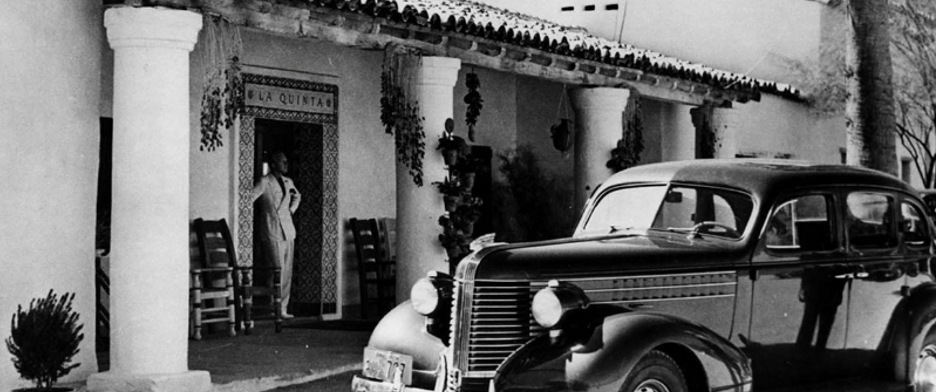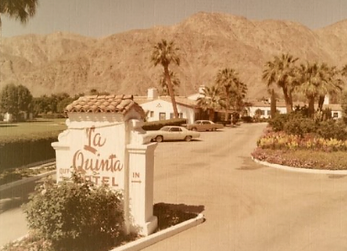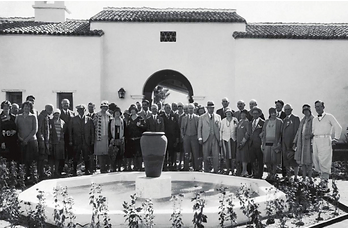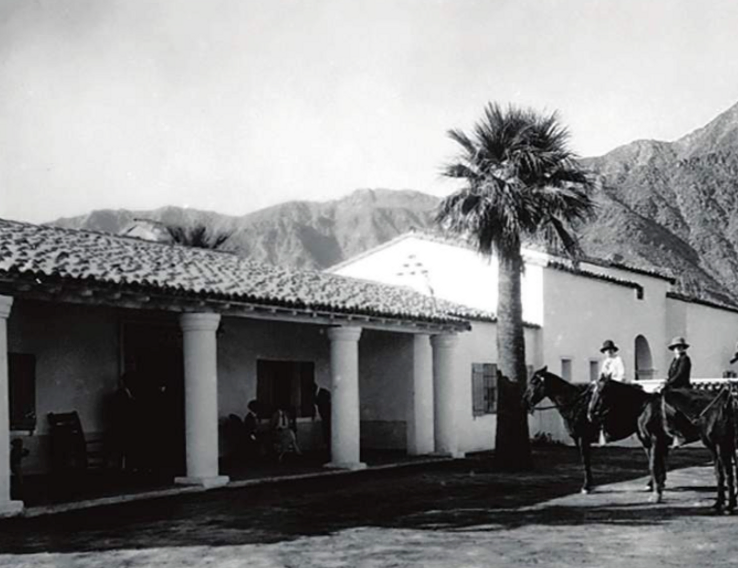The Fascinating History of La Quinta and La Quinta Resort & Club
The Fascinating History of La Quinta and La Quinta Resort & Club
Updated: Oct 3, 2023

La Quinta Hotel
PGA WEST® celebrates its legendary hospitality partner with a look at the resort's �– and the area's — storied past:
The origin of modern-day La Quinta dates back at least two millennia, which makes the 1926 founding of La Quinta Resort & Club (originally called La Quinta Hotel) seem relatively recent. But, regardless of where in history you put the magnifying glass, the cultural terrain of La Quinta is rich with more than 500 documented archeological sites!
Earliest Beginnings
The native desert Cahuilla inhabited the encampments around the now-extinct Lake Cahuilla, leaving evidence of their existence in stonefish traps and petroglyphs carved into boulders along the shoreline. It's believed that the first Europeans to meet the Cahuilla traveled with Spanish explorer Juan Batista de Anza in 1774 on Anza's expedition to find an overland trade route from Mexico to Alta (Upper) California.
La Quinta's rise in the latter half of the 19th century reads like an anthology of the Old West, teeming with cunning entrepreneurs, zealous fortunate hunters, and intrepid settlers seeking land and economic opportunity.
When prospectors struck gold in La Paz, Arizona, in 1862, William Bradshaw blazed an overland trail on an ancient Indian trading route through the Colorado desert to the gold fields. Point Happy (now Highway 111 and Washington Street) served as a vital stagecoach stop on the Cocomaricopa-Bradshaw Trail.
The arrival of the transcontinental railroad, construction of a depot and hotel in Indio, and early homesteaders sowed the seeds for the region's agricultural industry in the early 1900s.
The Birth of a Resort
"In a front-line trenches, thick with mud, two young officers huddled again the rain and bitter cold and made a pact, resolving that if they lived through the war, they would return to the United States and seek the driest, warmest, most enjoyable climate they could find and settle down." This idealistic promise made between Fred Ickes and Walter H. Morgan during World War I instigated what would become one of the most sought-after resort destinations in the country.

La Quinta Hotel
While Ickes established Rancho La Quinta to produce dates and citrus fruits, Morgan purchased 1,400 acres from the Cahuilla to fulfill his vision of a small, secluded retreat. In 1925, Morgan enlisted Pasadena architect Gordon Kaufmann to design La Quinta Hotel's main buildings, lobby, dining room, and 20 guest casitas, each named for a saint. Kaufmann's passion and creativity resulted in an architectural landmark seamlessly blending Spanish Colonial and California Mission styles

La Quinta Hotel Opening Day
La Quinta Hotel opened in 1926 and quickly became the favorite hideaway for the Hollywood elite and business tycoons like Errol Flynn, Clark Gable, Greta Garbo, Bette Davis, Joan Crawford, Katherine Hepburn, Robert Montgomery, the DuPonts and the Vanderbilts. Film director Frank Capra visited frequently, writing many of his award-winning classics — including the 1936 Mr. Deed Goes to Town — from the sanctum of his private casita. In 1927, the hotel unveiled the Coachella Valley's first golf course, a $50,000 nine-hole course designed by Norman MacBeth for a daily green fee of $1!

La Quinta Hotel
World War II rationing made travel to the desert impossible. The hotel shuttered from 1942 to 1945 and the Army appropriated the property; it's believed that members of General George Patton's staff used some of the hotel facilities. After the war, La Quinta Hotel reemerged — more in demand than ever — as celebrities, U.S. presidents, dignitaries and new and returning guests again sought its acclaimed amenities and services.

La Quinta Resort & Club
Today, La Quinta Resort & Club has grown to encompass nearly 800 guest casitas and villas, 41 pools, a luxury spa, five restaurants, a wide range of recreational activities, and many more amenities. The property offers all the modern frills of 21st-century travel. But take a quiet stroll through the resort's expansive grounds and arcaded walkways, and you can still feel its timeless allure.
Edited excerpt from La Quinta Resort & Club 2020 Hideaway magazine.
Photo Credits: La Quinta Resort & Club and La Quinta Historical Society

